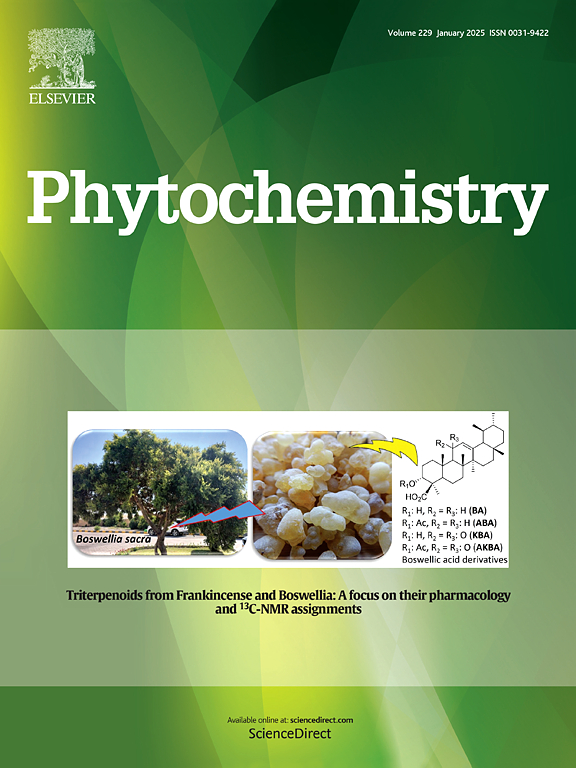Eleven undescribed sesquiterpenoids with multiple skeleton types and cytotoxicity from the South China Sea soft coral Lemnalia sp.
IF 3.4
2区 生物学
Q2 BIOCHEMISTRY & MOLECULAR BIOLOGY
引用次数: 0
Abstract
Marine organisms have great potential for medical and bioproducts applications, with corals having been in the spotlight as an important research target for the discovery of new bioactive marine natural products. Eleven undescribed sesquiterpenoids, named lemnalinoids A−K (1−11), and one known sesquiterpenoid (12) were isolated from the South China Sea soft coral Lemnalia sp. The structures and absolute configurations of new compounds were elucidated by extensive analysis of spectroscopic data, single crystal X-ray diffraction, quantum chemical calculations and TDDFT-ECD calculations. Compounds 1−3 are unusual sesquiterpenoids with spironolactone structure, of which compound 1 is an uncommon brominated sesquiterpenoid of soft coral origin. Compounds 4−6 and 12 are four rare sesquiterpenoid alkaloids from soft coral, and compound 7 is an unusual sesquiterpenoid with a 6/5/6 tricyclic skeleton system, besides, compounds 8−11 are undescribed nardosinane and nornardosinane sesquiterpenoids. In the bioactivity assay, compound 2 exhibited cytotoxicity against NCI–H446 cell lines with an IC50 value of 19.32 μM, and the molecular docking results indicated that the mechanism of action may be related to its inhibitory effect on the target proteins VEGFR2, CD56, and PARP.

南海软珊瑚中具有多种骨架类型和细胞毒性的11种未描述倍半萜类化合物。
海洋生物在医学和生物制品方面具有巨大的应用潜力,其中珊瑚作为发现新的生物活性海洋天然产物的重要研究对象一直备受关注。从南海软珊瑚Lemnalia sp中分离到11个未描述的倍半萜类化合物,命名为lemnalinoids A-K(1-11)和1个已知的倍半萜类化合物(12)。通过光谱数据分析、单晶x射线衍射、量子化学计算和TDDFT-ECD计算对新化合物的结构和绝对构型进行了鉴定。化合物1-3为罕见的螺内酯结构倍半萜,其中化合物1为罕见的软珊瑚来源的溴化倍半萜。化合物4 ~ 6和12是四种罕见的软体珊瑚倍半萜类生物碱,化合物7是一种罕见的具有6/5/6三环骨架体系的倍半萜类,化合物8 ~ 11是未描述的纳多西烷和正纳多西烷倍半萜类。在生物活性实验中,化合物2对NCI-H446细胞株表现出细胞毒性,IC50值为19.32 μM,分子对接结果表明其作用机制可能与其对靶蛋白VEGFR2、CD56和PARP的抑制作用有关。
本文章由计算机程序翻译,如有差异,请以英文原文为准。
求助全文
约1分钟内获得全文
求助全文
来源期刊

Phytochemistry
生物-植物科学
CiteScore
6.40
自引率
7.90%
发文量
443
审稿时长
39 days
期刊介绍:
Phytochemistry is a leading international journal publishing studies of plant chemistry, biochemistry, molecular biology and genetics, structure and bioactivities of phytochemicals, including ''-omics'' and bioinformatics/computational biology approaches. Phytochemistry is a primary source for papers dealing with phytochemicals, especially reports concerning their biosynthesis, regulation, and biological properties both in planta and as bioactive principles. Articles are published online as soon as possible as Articles-in-Press and in 12 volumes per year. Occasional topic-focussed special issues are published composed of papers from invited authors.
 求助内容:
求助内容: 应助结果提醒方式:
应助结果提醒方式:


